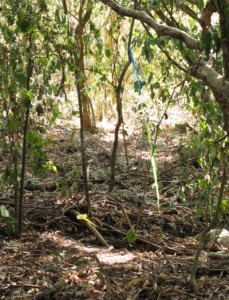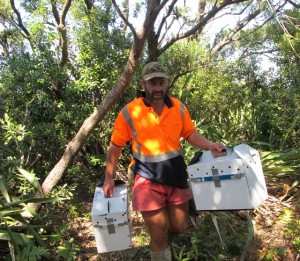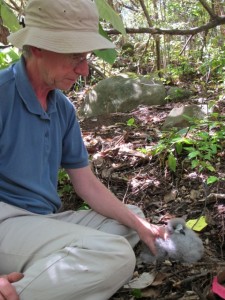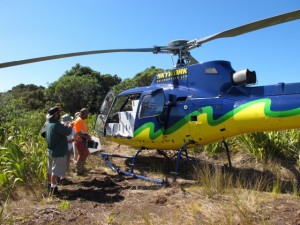Motuora Restoration Society has just completed a successful transfer of 70 chicks from Red Mercury to Motuora!
The chicks will fledge from Motuora and the hope and desire is that, when these chicks reach adulthood, after spending their first three years at sea, they will return to nest on Motuora and start a new colony there. Pycroft’s petrels have been recorded breeding on a few offshore islands along the east coast of NZ – total population is around 2,000 to 4,000 breeding pairs.
It is important to select only those chicks at an appropriate stage of development for transfer to another location. Like many other burrow-nesting seabirds, this species normally returns to breed at the colony in which it was born. Young birds learn their home location before they fledge and leave the colony for the first time. They are thought to use a range of visual (star maps, local terrain features), odour, sound and possibly magnetic clues to find their way back to the colony. More advanced chicks may already have imprinted on the colony and so cannot be transferred. The removal of less advanced chicks might cause their parents to abandon their burrow for the next year’s breeding and also, it is more difficult to keep younger chicks in good condition at their new home.
For this transfer to Motuora chicks were selected on Red Mercury following Helen Gummer’s guidelines on measurement of weight and wing length as well as an overall health check to maximise their chances of successfully fledging from their new home.

Burrows marked with coloured flagging tape to help the collection team re-identify where chicks selected for transfer are

Vince Waanders carrying chicks to the helicopter landing pad. two chicks are in each box. There is a divider between each bird and the box has plenty of air holes.
Artificial burrows were installed on Motuora months before in preparation.
The transferred birds will be fed an artificial diet by crop tube until they grow full feathers and take off. A delightful ‘sardine smoothy’ will be given each bird on alterative days, which is their normal feeding pattern, by trained volunteer feeders. The feeders are last in the chain of volunteers overseen by sea bird specialists who have got this project off the ground.
If you’d like to help the project, the Motuora Restoration Society would be delighted to have donations towards the purchase of an outdoor sound system which will be used to broadcast recordings of a Pycroft’s colony every night for years to come. This will encourage the birds to return and nest on the Island.
Liz Norquay, collection team.



